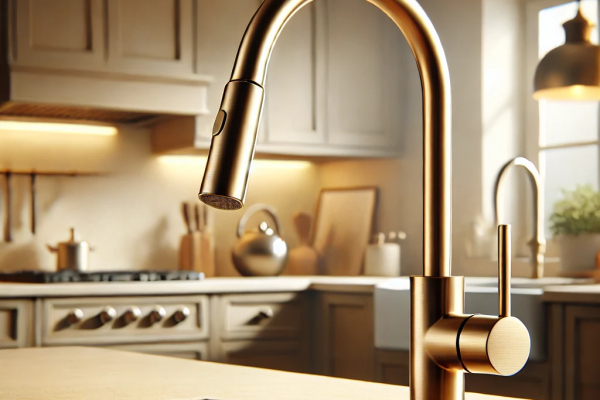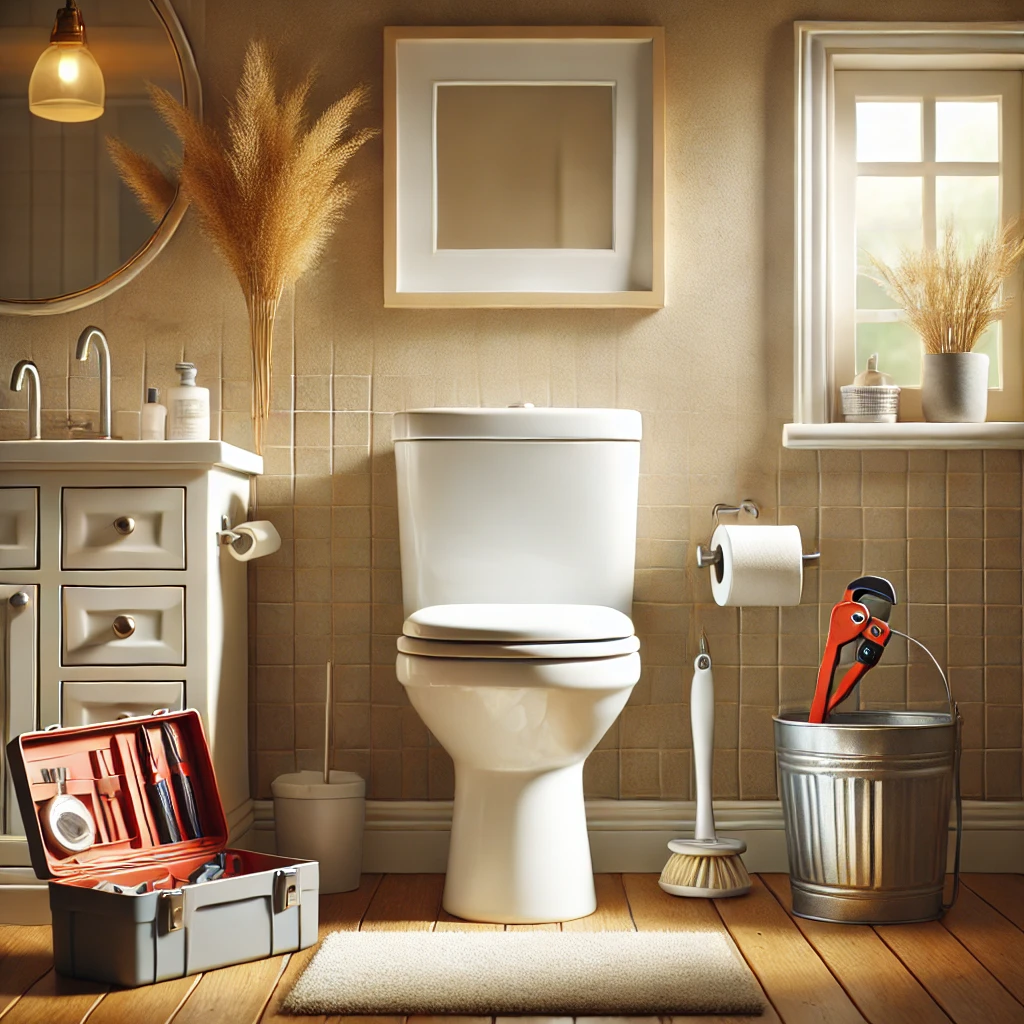
The Faucet of Your Dreams: How to Choose the Perfect Fixture for Your Kitchen and Bathroom
An Experienced Perspective from a Professional Plumber in Texas
We use our faucet every single day—whether it's to quickly wash our hands, rinse off fruit, or fill a pot for tea. Yet most people only start thinking about how important it is to choose a high-quality, convenient faucet when it’s time to replace an old one or renovate the kitchen or bathroom. This is especially crucial in hot regions like Texas, where water conservation is top of mind. In this article, I, a plumber with many years of professional experience, will share key points on how to select the best new faucet for your home.
Why Is Choosing the Right Faucet So Important?
A faucet is more than just a spout for running water. It’s a key element of your daily comfort, safety, and even design aesthetic. Imagine this situation: you spend a considerable amount of money on a new kitchen or bathroom, and a year later, the faucet starts leaking or breaks because it contains poor-quality plastic parts. You’re facing repairs again, and the cost of replacement is an unpleasant surprise. To avoid this hassle, it’s better to invest in a high-quality faucet from the start, paying attention not only to its appearance but also to what’s inside.
Water usage is another critical reason to choose carefully. In a state like Texas, with its often drought-prone climate, conserving water is paramount. Modern faucets can maintain good water pressure while reducing overall usage—vital for regions where natural resources can be scarce. By choosing the right faucet, you’re making an investment in your everyday life and in preserving the environment.
Style, Functionality, and Water Conservation: Three Key Pillars of a Good Choice
1. Style and Design
Today’s market offers an enormous variety of shapes, colors, and finishes. Some brands focus on sleek, minimalist lines, while others produce retro models that fit classic interiors. You can find faucets in brushed gold, matte bronze, or mirror-bright chrome. Ultimately, your faucet should blend seamlessly into the look of your kitchen or bathroom while meeting practical needs:
- Large, high-arched models (“gooseneck”) are ideal in a spacious kitchen because they allow you to place tall pots under the spout.
- A classic bathroom might look best with a two-handle faucet that has vintage-style detailing.
2. Functionality
How you turn the water on and adjust the temperature matters:
- Single-handle faucets are the most popular for kitchens. They’re easy to operate if your hands are messy—just use your elbow or the back of your hand to move the handle.
- Two-handle faucets remain a classic choice, especially in bathrooms. Some people find it more convenient or stylish to have separate handles for hot and cold water.
- Touchless (sensor) faucets are steadily gaining traction. You can turn them on with a quick motion or a light touch of the elbow, so you don’t end up leaving greasy smudges on the handle—particularly helpful in kitchens and public restrooms.
3. Water Conservation
More and more manufacturers are focusing on reducing water flow without compromising pressure or the quality of the stream. Special aerators and refined cartridge designs play a huge role here. In most U.S. states, including Texas, there are regulations on maximum flow rate—often around 2.2 gallons per minute (gpm) at 60 psi. In practice, a well-designed aerator can lower usage to about 1.5–1.75 gpm without affecting the user experience. In a dry, hot climate like Texas, such models can significantly reduce water consumption.
Quality Materials and Reliable Brands
When buying a faucet, pay attention to the manufacturer. The market is flooded with lesser-known brands offering inexpensive models made from substandard materials. Common issues with these faucets include:
- Plastic components in places that experience heavy wear (like inside the cartridge).
- Poor-quality finishes that peel off quickly, revealing unattractive metal underneath.
- Difficulty—or impossibility—of finding spare parts if the brand goes out of business or is based overseas.
If a “specialty part” inside your faucet breaks and can’t be sourced, you’ll have to replace the entire fixture. It’s far more practical to invest in a trustworthy brand from the start, one that offers at least a few years of warranty coverage and a comprehensive service center network. This factor is especially important in larger states like Texas, where waiting for a part to be shipped can turn into a long, frustrating process if no local service center is available.
Getting Ready for Installation: What You Need to Know
1. Check the Number of Holes in Your Sink or Countertop
If you’re replacing a faucet in an existing kitchen or bathroom, note how many holes are in your sink or countertop. A standard two-handle faucet might require three holes (one for each handle and one for the spout), whereas switching to a single-handle model could demand a deck plate (escutcheon) to cover unused openings. Conversely, if you want to add a soap dispenser or a filtered water tap, you might actually need extra holes.
2. Spout Height and Space Above the Sink
A tall, gooseneck faucet is convenient in the kitchen because it accommodates larger cookware. However, check for potential obstructions such as low cabinets, a windowsill, or a tight space near a wall. Measure the dimensions of the new faucet and the distance to any surrounding structures before buying.
3. Water Pressure and Aerators
If your home has low water pressure, make sure the model you choose is designed to work efficiently in those conditions. Manufacturers typically specify the pressure levels required for achieving the stated flow rate. High-quality aerators not only conserve water but also help create a steady, aerated flow—even if the pressure is somewhat lower than average.
Touchless Faucets: Pros and Cons
Technological innovations have transformed modern plumbing, and one area where this is particularly evident is in the rise of electronic, sensor-equipped faucets. The benefits are easy to see:
- You don’t have to touch the handle with greasy or dirty hands, improving hygiene and kitchen cleanliness.
- Some models can integrate with “smart home” systems, allowing you to set exact water volumes or timed water flows.
- A correctly installed touchless faucet helps conserve water since it stops the flow the moment you remove your hands.
However, keep in mind a few important considerations:
- These models require a power source, whether batteries or direct electrical connection.
- They typically cost more than standard faucets.
- Installation and servicing of sensor faucets demand higher skill levels or specialized knowledge.
If you love the idea of a “smart home,” a sensor faucet can be a welcome addition—just be sure you’re comfortable with the price tag and have easy access to proper maintenance or repairs.
Common Mistakes People Make When Choosing a Faucet
Purchasing the Cheapest Model Without Researching Quality
Many buyers are drawn in by a rock-bottom price tag, not realizing the faucet may be constructed from poor-quality materials. In the end, its internal mechanisms can fail quickly, and repairs mean more unexpected costs.
Forgetting About Installation Constraints
Before buying, clearly understand how many holes your sink has, and how much space you have between the sink and wall or cabinets. People often discover too late that the tall spout they purchased won’t fit, or that the new faucet hits a shelf above the sink.
Ignoring Local Requirements and Conditions
Different regions have different regulations or norms regarding water flow rates. In Texas, there may be specific rules due to water conservation efforts. Buying a faucet that doesn’t meet local standards can lead to fines or costly replacements.
No Backup Plan
If the manufacturer is unknown or based overseas with no official U.S. presence, you may struggle to find replacement parts. It’s safer to choose brands that have been around for a while and maintain local service centers.
Practical Advice from a Texas Plumber
- Invest in Established Brands. While they may be a bit more expensive, you’ll likely save on future repairs and maintenance. Plus, spare parts will be readily available.
- Opt for Eco-Friendly Models Whenever Possible. If you see a 1.5-gpm faucet that still delivers strong flow—thanks to a well-designed aerator—go for it. In Texas, where drought conditions can occur, every extra gallon of water saved can make a difference.
- Pay Attention to Warranty. Good manufacturers offer at least a three-to-five-year warranty, sometimes even a lifetime guarantee. This is a strong signal that the brand stands behind its product.
- Plan for Under-the-Sink Space. Modern faucets often come with more complex components, particularly sensor faucets. Be sure to confirm whether you need room for a battery pack or electrical supply, as well as how the supply lines will be routed.
- Don’t Hesitate to Consult a Professional. If you’re uncertain about which faucet to choose, have a plumber do a pre-installation inspection. A professional will notice details—like spacing or the need for extra holes—that you might overlook.
Installation: DIY or Call a Pro?
Installing a new faucet by yourself isn’t impossible if you have basic plumbing skills. In most cases, it’s a matter of following these steps:
- Shut off the water supply.
- Remove the old faucet.
- Install new gaskets or seals as needed.
- Tighten the mounting nuts.
- Connect the hot and cold water lines.
However, there are times when a professional is your best bet:
- You have an unusual sink or countertop that needs additional holes.
- The faucet features sensor technology, and you’re unsure how to handle the power source.
- There are concerns about the condition of your pipes or plumbing system; additional repairs might be required.
In some Texas municipalities, local regulations specify how plumbing fixtures must be installed. If you’re unfamiliar with these rules, you could end up paying more in the long run or facing complications down the road.
Conclusion: Making a Balanced Choice
Selecting a faucet may seem simple, but it involves numerous considerations—everything from aesthetics and daily ease of use to technical specs and local regulations. Water conservation is especially significant in drought-prone areas like Texas.
To avoid buyer’s remorse, focus on brand reliability, the materials used in the faucet, and how the model will fit into your space. Think about the installation process well in advance and confirm whether you have quick access to qualified professionals. If you plan carefully, you’ll end up with a reliable, convenient, stylish, and eco-friendly faucet that serves you well for many years.






